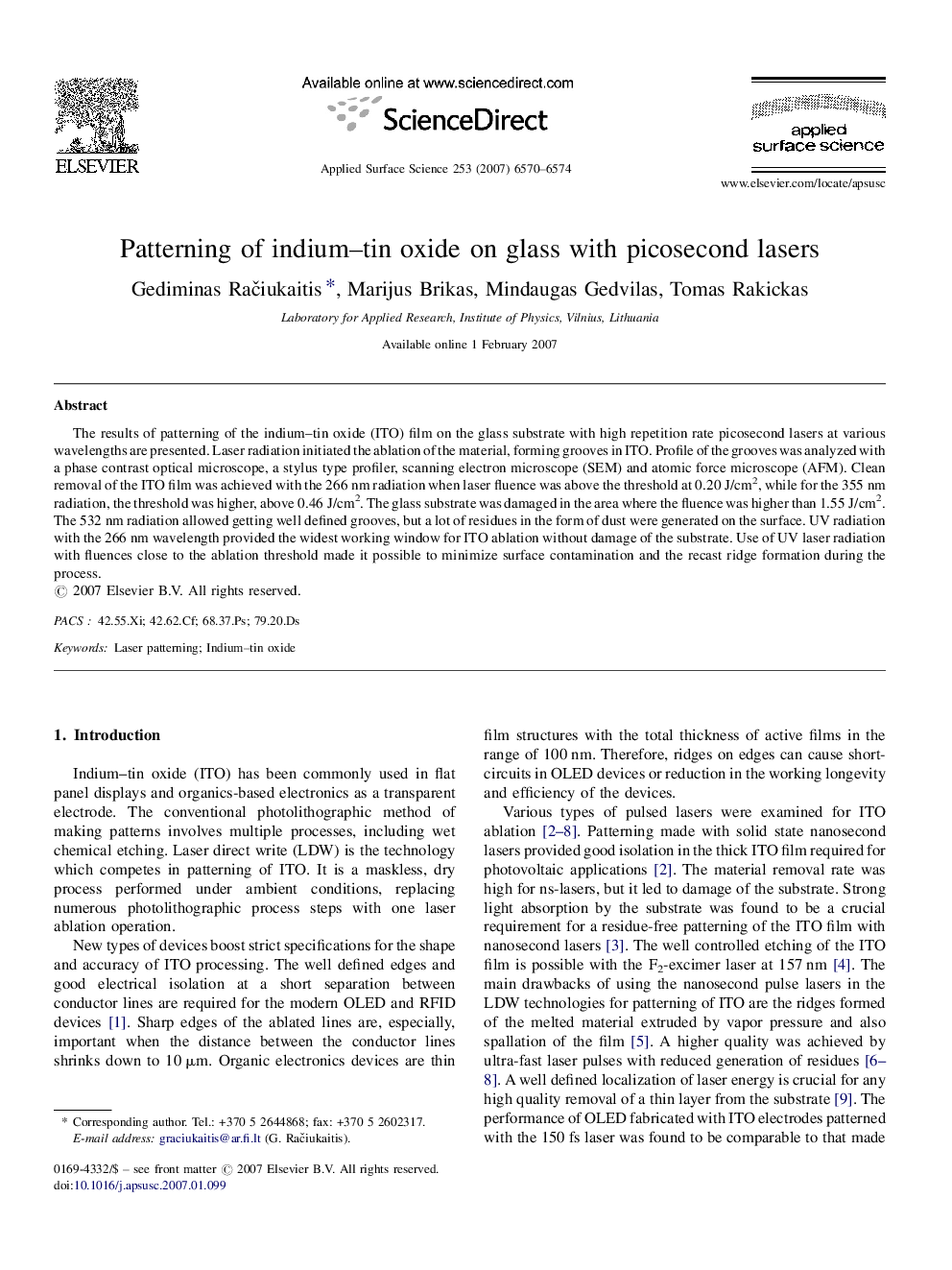| Article ID | Journal | Published Year | Pages | File Type |
|---|---|---|---|---|
| 5364740 | Applied Surface Science | 2007 | 5 Pages |
The results of patterning of the indium-tin oxide (ITO) film on the glass substrate with high repetition rate picosecond lasers at various wavelengths are presented. Laser radiation initiated the ablation of the material, forming grooves in ITO. Profile of the grooves was analyzed with a phase contrast optical microscope, a stylus type profiler, scanning electron microscope (SEM) and atomic force microscope (AFM). Clean removal of the ITO film was achieved with the 266Â nm radiation when laser fluence was above the threshold at 0.20Â J/cm2, while for the 355Â nm radiation, the threshold was higher, above 0.46Â J/cm2. The glass substrate was damaged in the area where the fluence was higher than 1.55Â J/cm2. The 532Â nm radiation allowed getting well defined grooves, but a lot of residues in the form of dust were generated on the surface. UV radiation with the 266Â nm wavelength provided the widest working window for ITO ablation without damage of the substrate. Use of UV laser radiation with fluences close to the ablation threshold made it possible to minimize surface contamination and the recast ridge formation during the process.
